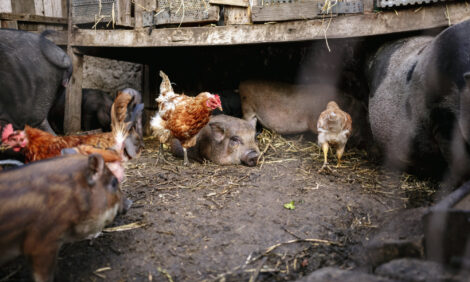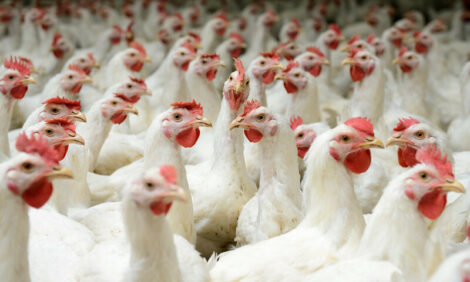



Non-ionophore Anticoccidial May Help Manage Necrotic Enteritis in RWA Flocks
Flocks raised without antibiotics (RWA) that received a non-ionophore anticoccidial after coccidiosis vaccination had fewer necrotic enteritis (NE) lesions, less mortality and better feed conversion when exposed to a Clostridium perfringens challenge in a recent controlled study presented at the 2017 International Poultry Scientific Forum.1
In this study, investigators spray-vaccinated more than 1,500 chicks with an attenuated coccidia vaccine at hatch, then divided them into treatment groups. Each group then received either Deccox® (decoquinate), Robenz® (robenidine hydrochloride) or Zoamix® (zoalene) between 14 and 28 days of age as part of a bio-shuttle programme.
One additional group received no feed additive and served as a control, and another group received bacitracin methylene disalicylate (BMD), which is indicated for NE prevention, said Manuel Da Costa, DVM, PhD, of Zoetis.
At 16 days of age, the investigators challenged the birds with C. perfringens isolated from a field outbreak, he said.
Improved FCR
Compared to non-medicated controls, feed-conversion ratio (FCR) improved by 3 points in birds that received Zoamix and by 2 points in birds that received Robenz. The anticoccidial Deccox resulted in the best bodyweight of the three non-ionophore anticoccidials.
Birds in all three of these treatment groups also had reduced mortality reflected by a reduced incidence of severe NE lesions. Severe lesions were reduced by 17 per cent in the Deccox group, by 26 per cent in the Robenz group and by 27 per cent in the Zoamix group when compared to non-medicated controls, Dr Da Costa said of the study, conducted by Zoetis in collaboration by with Colorado Quality Research.
Not surprisingly, BMD resulted in the best FCR — 5 points — the best bodyweight gain, and the fewest NE lesions as well as the lowest mortality, he said.
NE is perhaps the greatest challenge to successful RWA production and tends to occur with coccidial cycling in the presence of C. perfringens, a cause of NE. Coccidia cycling along with C. perfringens challenge can increase the severity of NE lesions as well as NE-related mortality, Dr Da Costa explained. RWA production systems have to rely on vaccines, non-ionophore anticoccidials or a combination of both — a bio-shuttle programme — to prevent coccidiosis.
Compared to non-medicated controls, birds in this study that received non-ionophore anticoccidials had significantly (p<.05) reduced mortality as well as numerically improved feed conversion and reduced NE lesions, thereby suggesting good potential for use in bio-shuttle programmes designed for flocks raised without antibiotics, Dr Da Costa concluded.
You can listen to the podcast by clicking here.
1Da Costa M, et al. Effects of various anticoccidials as bio-shuttle alternatives for broilers under a necrotic enteritis challenge. 2017 International Poultry Scientific Forum. Atlanta, Georgia.









